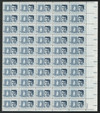
# 1246 - 1964 5c Kennedy Memorial
5¢ Kennedy Memorial
City: Boston, MA
Quantity: 511,750,000
Printed by: Bureau of Engraving and Printing
Printing Method: Rotary Press
Perforations: 11 x 10 1/2
Color: Blue gray
35th American President
john f. kennedy saves pT-109 crew
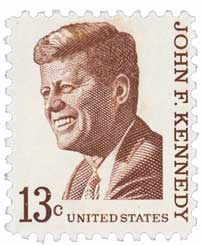
On August 2, 1943, future president John F. Kennedy saved the majority of his PT-109 crew after a Japanese destroyer rammed them.
As a member of a wealthy and prominent family, Kennedy likely could have avoided military service. Even as World War II raged on in Europe, he graduated with honors from Harvard and had a promising future. But that’s not how he did things.
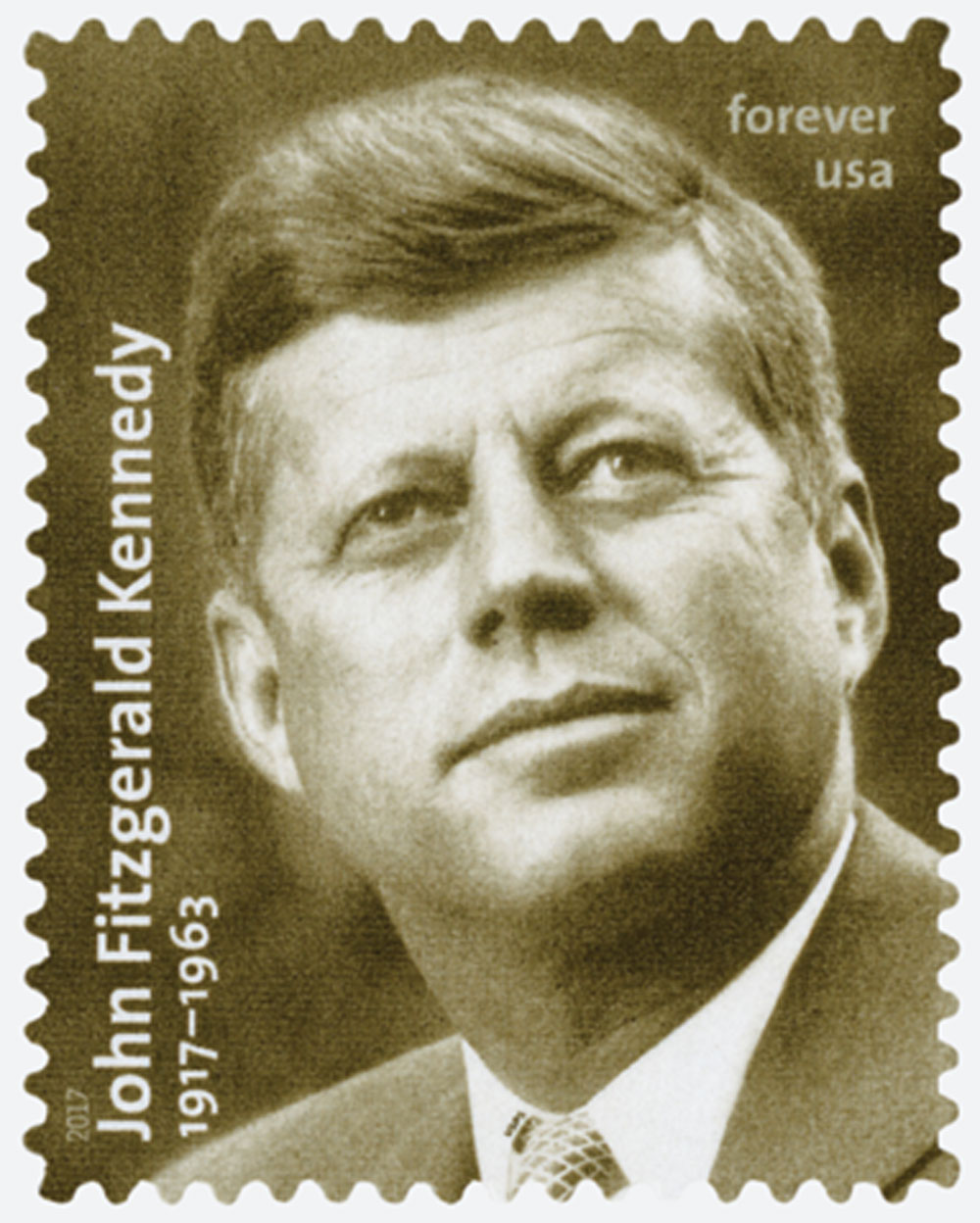
Instead, young “Jack” Kennedy used his family influence to join the military. His back problems caused the army to reject him, but he wouldn’t give up. In September he joined the Navy. Soon, America was drawn into the war and Kennedy eventually was promoted to lieutenant (junior grade) and given command of a patrol torpedo (PT) boat.
Late in the night of August 1, 1943, Lieutenant JG Kennedy and his small crew took one of fifteen boats out to patrol the waters in Blackett Strait near the Solomon Islands. They were charged with attacking Japanese ships to disrupt supply routes. In the early morning hours of August 2, 1943, they saw a dark shape approaching from 200 to 300 yards in the distance. They first thought it was another group of American PT boats, but soon found it was a Japanese destroyer.
As PT-109 turned to fire torpedoes, the advancing destroyer rammed right through, slicing the boat in half. Kennedy and five others clung to the wreckage, and five more were floating about 100 yards away. Kennedy helped get these men to the temporary safety of the wreckage.
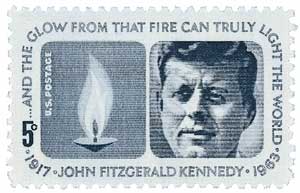
By dawn on August 2, it was obvious that the remains of PT-109 were going to sink. Rather than go down with the ship, Lieutenant Kennedy and his men decided swim to an island three miles away. Kennedy was a strong swimmer, having competed on Harvard’s varsity swim team. Not only did he help push the raft, but he also towed a badly burned crewman by grasping the life preserver strap between his clenched teeth. After about 15 hours in the water, they reached the island.
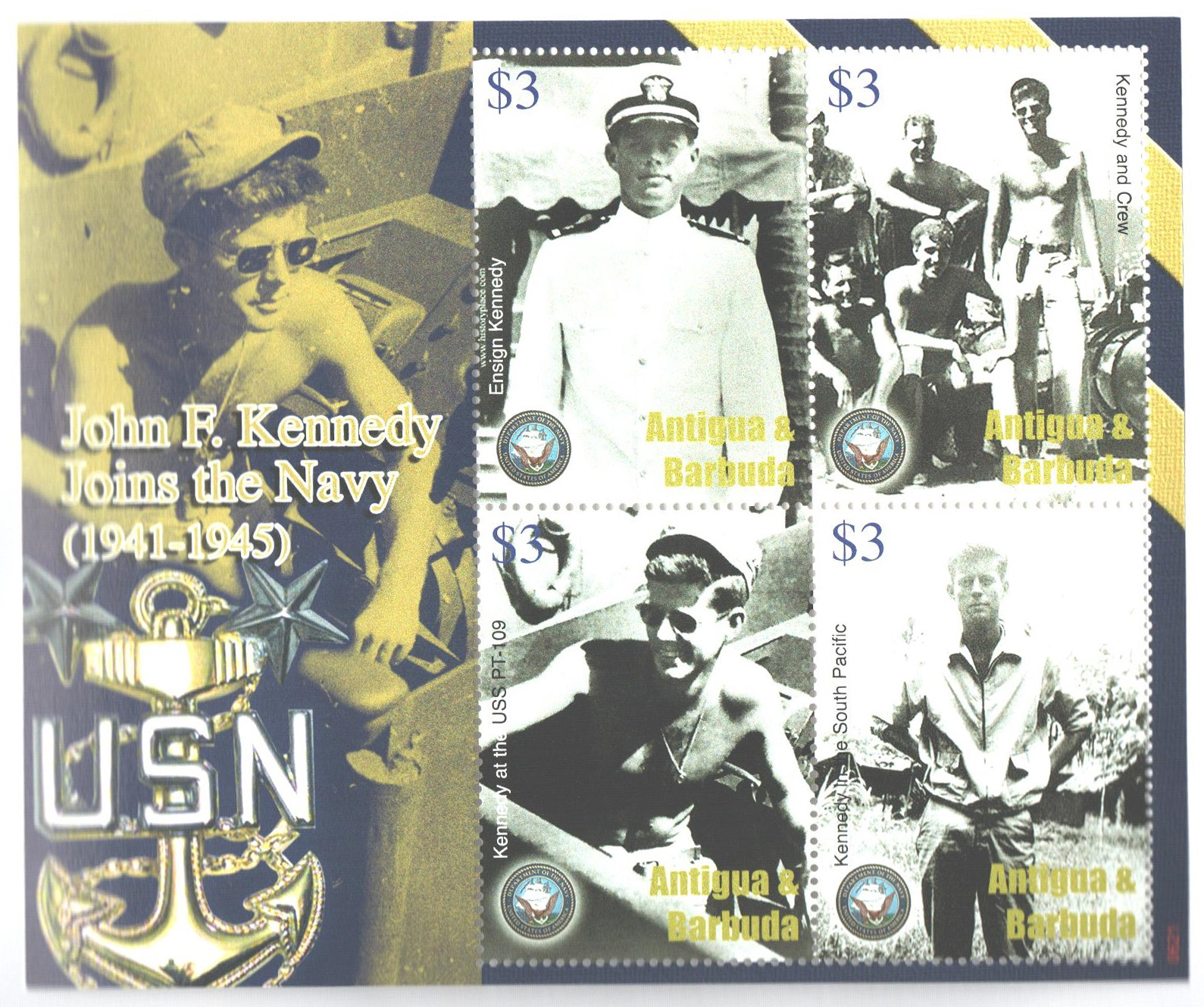
After a couple of days on the island with no food or water, Kennedy swam his crew to a neighboring island. There was no fresh water to be found there and the coconuts made some of the men ill. Kennedy was determined to try the next island over.
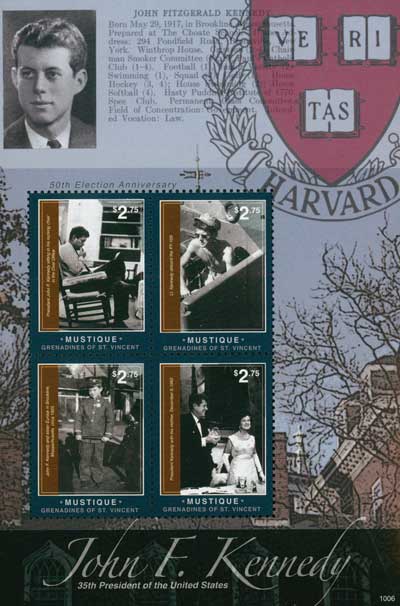
Upon arrival on the island, Kennedy found a small box of Japanese rations and a tin of water. He found two scouts for the Allies on the island. Kennedy scratched a message on a coconut shell and sent them for help. That shell later sat on his desk in the White House during his presidency.
Finally, on August 8, 1943, after six days, PT-109’s surviving crewmembers were rescued. For his bravery, Kennedy was awarded the Navy and Marine Corps medals, as well as a Purple Heart for a back injury he received in the wreck.
Kennedy was then promoted to full lieutenant and continued to command a motor torpedo boat. In March 1945, he was released from active duty because injuries sustained during the incident had made his back problems worse.
5¢ Kennedy Memorial
City: Boston, MA
Quantity: 511,750,000
Printed by: Bureau of Engraving and Printing
Printing Method: Rotary Press
Perforations: 11 x 10 1/2
Color: Blue gray
35th American President
john f. kennedy saves pT-109 crew

On August 2, 1943, future president John F. Kennedy saved the majority of his PT-109 crew after a Japanese destroyer rammed them.
As a member of a wealthy and prominent family, Kennedy likely could have avoided military service. Even as World War II raged on in Europe, he graduated with honors from Harvard and had a promising future. But that’s not how he did things.

Instead, young “Jack” Kennedy used his family influence to join the military. His back problems caused the army to reject him, but he wouldn’t give up. In September he joined the Navy. Soon, America was drawn into the war and Kennedy eventually was promoted to lieutenant (junior grade) and given command of a patrol torpedo (PT) boat.
Late in the night of August 1, 1943, Lieutenant JG Kennedy and his small crew took one of fifteen boats out to patrol the waters in Blackett Strait near the Solomon Islands. They were charged with attacking Japanese ships to disrupt supply routes. In the early morning hours of August 2, 1943, they saw a dark shape approaching from 200 to 300 yards in the distance. They first thought it was another group of American PT boats, but soon found it was a Japanese destroyer.
As PT-109 turned to fire torpedoes, the advancing destroyer rammed right through, slicing the boat in half. Kennedy and five others clung to the wreckage, and five more were floating about 100 yards away. Kennedy helped get these men to the temporary safety of the wreckage.

By dawn on August 2, it was obvious that the remains of PT-109 were going to sink. Rather than go down with the ship, Lieutenant Kennedy and his men decided swim to an island three miles away. Kennedy was a strong swimmer, having competed on Harvard’s varsity swim team. Not only did he help push the raft, but he also towed a badly burned crewman by grasping the life preserver strap between his clenched teeth. After about 15 hours in the water, they reached the island.

After a couple of days on the island with no food or water, Kennedy swam his crew to a neighboring island. There was no fresh water to be found there and the coconuts made some of the men ill. Kennedy was determined to try the next island over.

Upon arrival on the island, Kennedy found a small box of Japanese rations and a tin of water. He found two scouts for the Allies on the island. Kennedy scratched a message on a coconut shell and sent them for help. That shell later sat on his desk in the White House during his presidency.
Finally, on August 8, 1943, after six days, PT-109’s surviving crewmembers were rescued. For his bravery, Kennedy was awarded the Navy and Marine Corps medals, as well as a Purple Heart for a back injury he received in the wreck.
Kennedy was then promoted to full lieutenant and continued to command a motor torpedo boat. In March 1945, he was released from active duty because injuries sustained during the incident had made his back problems worse.






